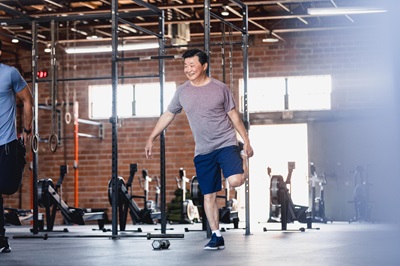This article is medically reviewed by Dr Valery Feigin | Professor of Neurology & Epidemiology and Director of NISAN (National Institute for Stroke and Applied Neurosciences), Auckland University of Technology.
If you’ve ever dealt with knee pain, you know just how frustrating it can be. Whether it's a dull ache or a sharp jolt, knee discomfort can affect everything from walking to simply getting out of a chair. In a previous blog, we gave a general overview of knee pain. Now, let’s go deeper—what really goes on with this major joint, how to recognize trouble, and most importantly, what you can do to help manage the pain.
Missed our previous blog? Catch up here for a full guide to understanding knee pain.
Why the Knee Matters So Much
The knee is the largest and one of the most complex joints in the body. The knee joint connects the thigh bone (femur) to the shin bone (tibia), enabling movements such as walking, running, jumping, and climbing stairs. It's crucial for mobility and balance. Because they take so much pressure daily, they’re also more vulnerable to wear, injury, or strain.

What Causes Knee Pain?
Knee pain can stem from many sources. According to WebMD, common causes include:
What Does a Knee Injury Feel Like?
Knee pain can come in different forms depending on the cause. Some common sensations include:
Things to Avoid When You Have Knee Pain
If you're experiencing knee pain, certain habits might actually be making it worse. Here’s what to steer clear of:
Taking a break to rest the knee and being mindful of these habits can make a big difference.

Breaking the Knee Pain Cycle with Knee TENS
Ongoing knee pain often leads to stiffness and reduced mobility, which can make the pain worse. That’s where TENS therapy (Transcutaneous Electrical Nerve Stimulation) can help.
TENS devices such as OMRON Knee Tens HV-F710-M are designed to deliver massage-like pulses directly around the knee joint to relieve pain and improve mobility. By interrupting the pain signals and stimulating the surrounding muscles, it encourages better blood flow, helps reduce stiffness, and supports more comfortable movement.

Final Thoughts
Knee pain isn’t just inconvenient; it affects your daily comfort and long-term health. But by understanding how the knee works, recognizing the warning signs, and using smart solutions like TENS therapy, you can stay a step ahead of discomfort. While TENS therapy may help reduce pain and stiffness, evidence for its effectiveness can vary between individuals and conditions. It’s best used alongside other treatments recommended by your healthcare provider.
|
Previous article Knee Pain No More! Key Tips for Long Lasting Relief |
Next article |